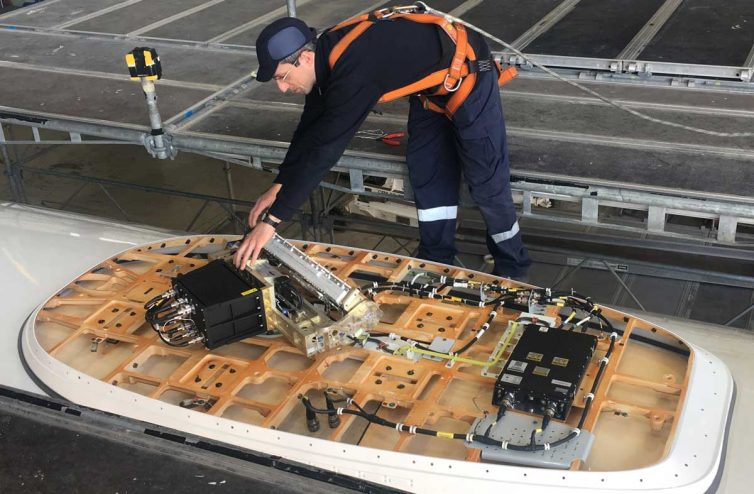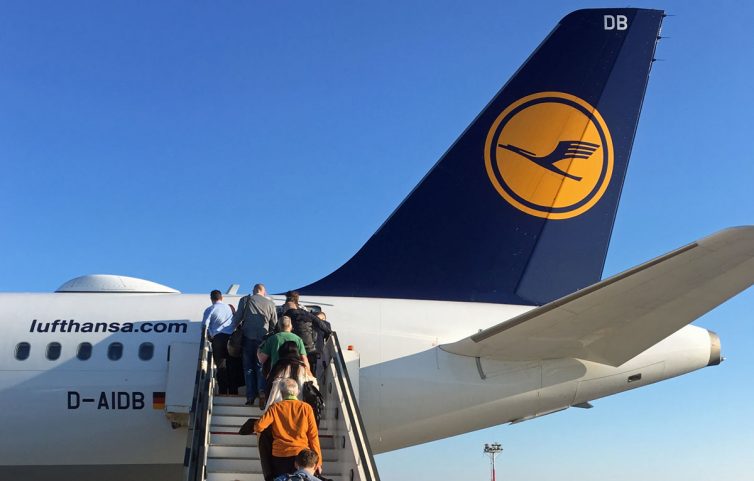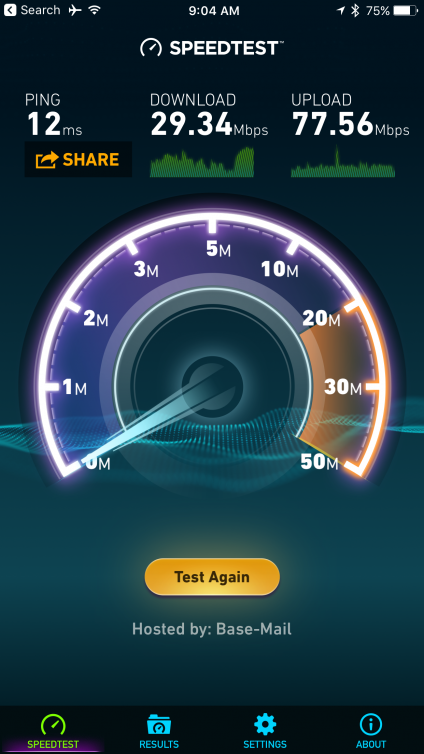Here in the U.S., we have been spoiled by the ubiquity of in-flight connectivity (IFC). A few years ago the IFC saturation rate reached a level affording passengers the opportunity to adjust expectations from being a nice-to-have feature to a downright entitlement. Delta, our on-again, off-again largest domestic carrier, has long been an in-flight WiFi leader, having reached just shy of a 100% IFC-equipped fleet years ago. Thanks to early IFC pioneers like Gogo, with their ATG products, the U.S. has truly had a jump start on other markets.
Because of this, it may be surprising to our U.S. readership that IFC is not terribly common with short-to-medium-range flights in and around Europe. Lufthansa (plus subsidiaries Austrian Airlines and Eurowings) are looking to change that. In partnership with Lufthansa Technik, Honeywell Aerospace, and Inmarsat, these carriers are deploying a new IFC solution at the steady clip of eight planes per week.
I recently had the opportunity to spend some time with Lufthansa Technik to learn about Lufthansa’s new in-flight connectivity solution and even experience it first hand…

A Technik worker shows off Lufthansa’s new in-flight connectivity tech – Photo: JL Johnson | AirlineReporter
Lufthansa’s new in-flight connectivity: Geeky details about the technology
Lufthansa chose a technology I first learned of way back in the summer of 2014 at Honeywell’s International Media Days event, but had yet to see deployed. Honeywell’s JetWave hardware works with Inmarsat’s Global Xpress (GX) service, the first high-speed broadband network to span the world. Lufthansa’s new in-flight connectivity, a Ka solution, can provide sustained peak speeds of around 50 MBPS per aircraft, compared to about half that for traditional single antenna Ku solutions. What does this all mean? Capable connectivity that should enable sufficient speeds for data-thirsty passengers.
Lufthansa’s new in-flight connectivity: What makes this special?
True to Germany’s reputation for innovation and efficiency, Lufthansa’s engineers have developed methods to install the new solution in as few as four days. One of the most striking facts I learned during my time with Lufthansa Technik was that they can install the JetWave antenna with fewer than 100 rivets. For comparison, Global Eagle (formerly known as “Row 44”), the Ku-band solution used by Southwest Airlines, requires more than ten times that amount. Fewer rivets mean fewer fuselage holes to be patched up when aircraft transfer ownership or come off of lease, and fewer labor hours, resulting in a quicker installation.
- Video chat with AvGeek GF – Image: JL Johnson | AirlineReporter
- Impressive speed test for Lufthansa’s new in-flight connectivity – Image: Speedtest.net
Putting Lufthansa’s New In-Flight Connectivity to the Test
I had the opportunity to experience Lufthansa’s new in-flight connectivity solution aboard D-AIDB, an Airbus A321 carrying flight 1311 between Malta and Frankfurt. The IFC came online roughly ten minutes after takeoff and proved speedy and capable despite the having some of the most data-intensive passengers in existence aboard: Aviation writers.
Sadly, the IFC went offline for about 45 minutes of our 2.5-hour flight. Following the outage, I was skeptic of the stability and decided to look for ways to test the continuity of the solution. The easiest test for this is video chat, but the standard go-to solutions (FaceTime, Skype, etc) had already been identified and blocked. Thankfully, we found an off-the-beaten-path option via SnapChat. While phone calls are frowned upon aboard planes (and for good reason!) this was a test environment.
In the spirit of bending the rules (for science!), I took the liberty of phoning my partner in crime back on the other side of the Atlantic. I’m pleased to report our call was stable and we were able to squeeze in a few good minutes before I returned the more serious business of testing the IFC by streaming Netflix, YouTube, Amazon Instant Video, and catching up on various social media platforms.
What’s next for Lufthansa’s new in-flight connectivity?
As of mid-April, 2017 the airline has equipped 30% of its A320 family, and about 70 aircraft in total. When I first met with Lufthansa Technik they were deploying the solution to seven new aircraft per week, but as of just a few days ago, that rate has risen to eight. The airlines expect to complete deployment to their short/mid-range aircraft by the middle of 2018, less than two years since completion of the first install.
There are now are ten aircraft between the Lufthansa and Austrian fleets which are offering the new connectivity for free to passengers during its test phase. During this period final items will be tweaked and the airlines will analyze passenger behavior and usage trends to further enhance the service. While the formal launch of the system has not yet begun, they are optimistic it will occur within the next few months.
Disclosure: Travel and lodging for this trip were provided by Lufthansa. Our opinions are always our own. Stay tuned for a review of Lufthansa’s Business Class offering aboard the 747-8 to and from Europe.



Love the story, waiting for the review!